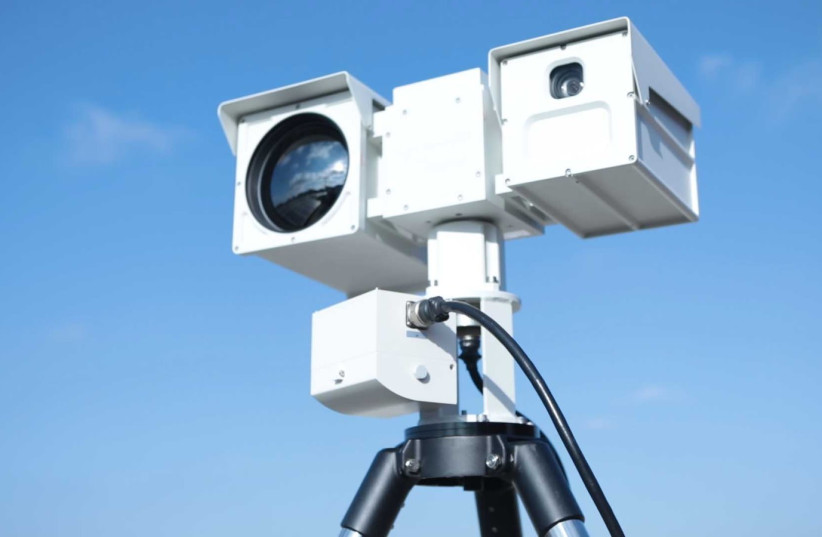“Once you’re using drones, you must assume that you can be seen from all directions – there’s not only one direction you need to hide from, it’s a 360-degree threat.”
Drone warfare and the technology used to counter it are becoming increasingly relevant topics in the discussion of national security: just this month, the IDF downed a Hezbollah drone flying at the border, the fifth spy drone felled by the Israeli army this year; in the United Arab Emirates, three fuel trucks were blown up by the Iran-aligned Houthi group in an attack that utilized drones and missiles, killing three people.
In response to the threat posed by unmanned aerial vehicles (UAVs), Israeli companies are developing effective countermeasures.
“Drone mania has changed everything. A good example of that is back when drones started to become a commercially available product, [ISIS] took this simple product and they used it to create a big tactical advantage,” said Lior Segal, CEO at AI and electro-optics company Thirdeye.
“I’m not talking about huge strategic drones – I’m [talking about] small drones that can collect intelligence. ISIS used this simple drone to calibrate their artillery: look at the screen, shoot, correct your artillery. With such a simple process they got great accuracy.”

Thirdeye is one of the Israeli companies aiding in the fight against enemy UAVs: the company’s technology utilizes AI analysis in concert with optical and thermal visioning technology to help detect drones. “The idea is that you take thermal and visual information and you combine the two channels (at night you can only use the thermal); and you use AI chips to perform automatic recognition on the object you’re looking for,” said Segal.
He explained that one of the primary benefits of using AI capabilities instead of a human observer is, simply, the lack of sleepiness and tunnel vision: “They never get tired. They stay concentrated, and provide the right information; usually what you see with humans when they look at the screen, is that if there’s something popping up in one part of the screen, they just focus on that, and then they miss a bunch of drones that are flying right next to it on the same screen. This is the limitation of the human mind.”
The need for his company’s technology is clear: as drone technology becomes more advanced, so too does the potential threat to the nation’s security. Noted Segal: “There’s not only one direction you need to hide from, it’s a 360-degree threat.”
According to Itzik Huber, CEO of drone countermeasure developer Skylock, that threat comes in several forms that are currently being developed: the first of which is the drones’ use of 5G networks in order to navigate and evade interference.
Due to their use of existing cellular networks, an operator’s ability to jam these drones is significantly hampered, because to jam a 5G drone means to jam the 5G network. “You definitely won’t be able to jam it, because you’re going to jam the entire communication of the whole area,” Huber explained.
Additionally, there is a looming threat of the appearance of drone swarms, which can target multiple points simultaneously, threatening to overwhelm any potential countermeasures by their sheer number. “They want to make it very difficult for the operator to select what drone to stop; if you have 50, at least some of them will make it to the target,” said Huber.
Yet another primary threat in the drone warfare field is the development of UAVs that don’t require any means of navigation besides optic sensors, essentially taking them off the grid by removing their reliance on GPS, radar, or RF technology. This, Huber and Segal agree, is a hugely dangerous concept. “It will be one of the biggest challenges, when it comes to drone [countermeasure] technology,” said Segal.
Skylock provides GPS spoofers and wearable jamming devices that can block drone activity within a one kilometer radius of the wearer, and even some simpler, more traditional methods: “We have a drone bullet,” said Huber. “Once we identify a drone, we can send an interception [drone] that hits, plastic-on-plastic, and breaks one or both drones.”
With so many threats on the horizon, companies like Thirdeye and Skylock are working to quickly develop an onslaught of tailor-made countermeasures, and rightly so: the flexibility of UAV products makes stopping them something akin to catching smoke. Said Huber: “If you don’t have specific capabilities against drones, you won’t stop them.”
